#desert fauna
Text
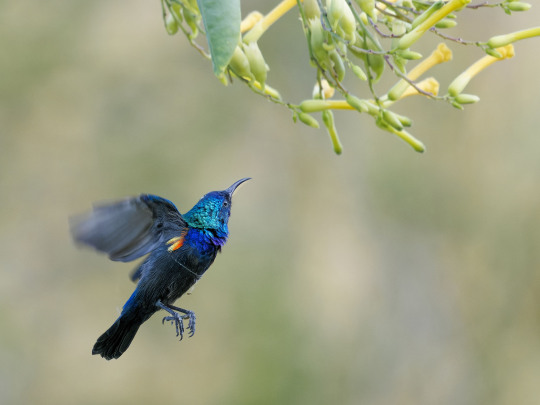

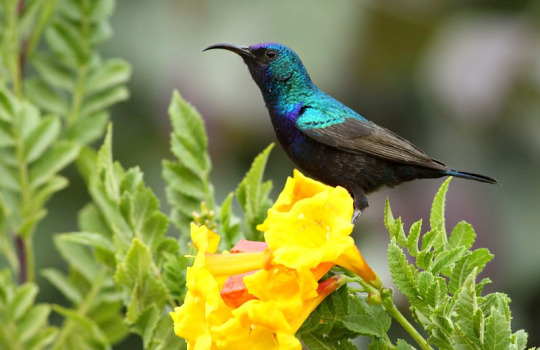
The Palestine Sunbird Persists
The Palestine sunbird, also known as the orange-tufted sunbird (Cinnyris osea) is the national bird of Palestine, and often seen as a symbol of resistance and hope. This species occurs in dry climates, particularly desert, scrubland, and savannahs, but can also be found in orchards and gardens where flowers are abundant. In addition to the Levant, C. osea occurs throughout the southwest cost of Saudia Arabia and the coasts of Yemen and Oman in the south.
C. osea is a small bird, 8 to 12 cm (3.1-4.7 in) long with a wingspan of only 14 to 16 cm (5.5-6.2 in). Males weigh on average 7.6 g (0.26 oz) and females are slightly smaller, at about 6.8 g (0.24 oz). Males are quite easy to identify due to their striking plumage; their feathers are iridescent, appearing dark until they shimmer glossy blue or green, with orange tufts at the side of the breast. In contrast females are fairly drab; grey-brown with a lighter underside. The beaks of the Palestine sunbird are also noted for their distinctively long and curved, which they have developed to efficiently feed on nectar.
Although not directly part of the hummingbird family, the Palestine sunbird shares many similarities with the group. Its diet consists of nectar, and is supplemented with insects. Their tongues are long, and brush-like, and the shape of their beak allows them to reach down to the base of the flower. For flowers that are , they will use their sharp beaks to pierce the side and access the nectar directly. All this is done at very high speeds, but unlike hummingbirds the Palestine sunbird cannot hover in place, and must land in order to feed. Because of their primary reliance on nectar, the orange-tufted sunbird is an important pollinator in its native region. Adults are rarely predated upon, but eggs and young are often targets for lizards, snakes, and birds of prey.
Reproduction begins in June, and continues through October. Males establish and defend territories, and court females by singing to attract a potential mate, then chasing her until she perches to signal her acceptance. Following the pairing, the two construct a purse-like nest, sometimes with a porch-like structure, that hangs from a branch. In this nest, 1-2 eggs are laid, and are incubated primarily by the female, while the male provides her food. The eggs take 13 to 14 days to hatch, and chicks are taken care of by both parents for an additional 14 to 21 days. Individuals can live up to 5 years in the wild.
Conservation status: The Palestine sunbird has a large range and population, and is thus considered Least Concern by the IUCN. Its primary threat is habitat loss due to agriculture and urban development.
If you send me proof that you’ve made a donation to UNRWA or another organization benefiting Palestinians, I’ll make art of any animal of your choosing.
Remember, the donation can be in any amount– every dollar counts!
Photos
Jorrit Vlot
Dula Alhashimi
Rana Hijawi
#Palestine sunbird#Passeriformes#Nectariniidae#sunbirds#perching birds#birds#deserts#desert birds#scrubland#scrubland birds#savannah#savannah birds#urban fauna#urban birds#middle east#animal facts#biology#zoology#ecology#free palestine
827 notes
·
View notes
Text
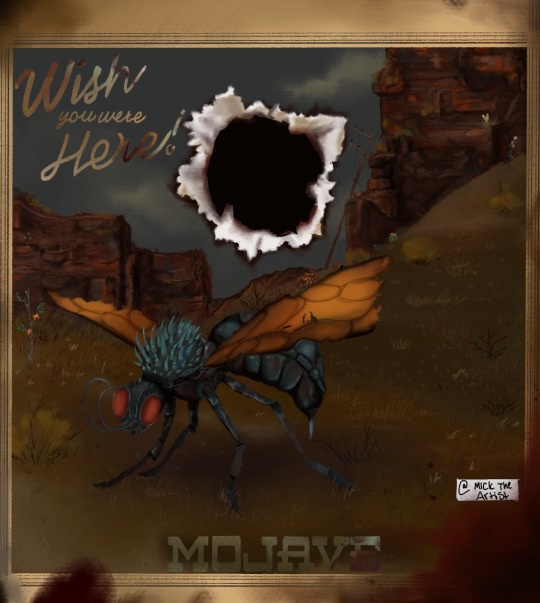
My new fallout art. I really like drawing monsters.
#my art#artwork#digital art#art#artists on tumblr#oc art#original art#cartoon#fallout 3#fallout 4#fallout fandom#fallout new vegas#fallout fanart#fallout: new vegas#fallout community#postcard#postcard art#courier six#fallout art#fallout nv#mojave desert#mojave wasteland#cazadores#nuka cola#digital artist#small artist#support#landscape#flora and fauna
146 notes
·
View notes
Text

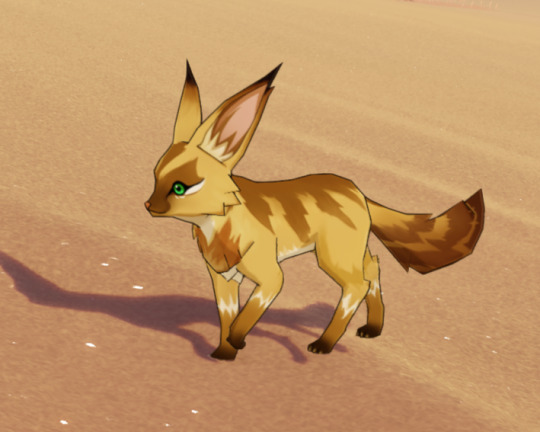





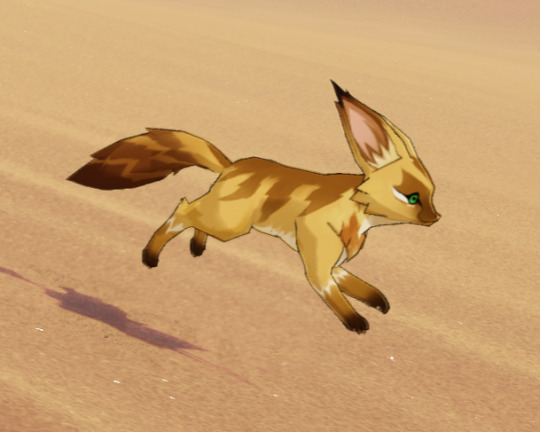
Desert Fox: A sly animal as elusive as a fairy that often appears in folk stories, symbolizing unusual cunning and ancient memories. These animals call the vast desert home and are smaller than most of their kin, which is possibly how they evaded the ancient calamities. Their long ears are an adaptation that helps them better live in their hot and dry desert home.
61 notes
·
View notes
Text

Big Bend National Park 🏜️
Inprnt // Threadless
#art#drawing#illustration#sutexii#nature#flora#fauna#national park#big bend national park#desert#landscape
38 notes
·
View notes
Text

#naruto#vol 28#ch 248#gaara#kazekage rescue arc#this implies that gaara knows every bird species in the desert#which wouldn't surprise me since he kind of IS the desert#he probably knows all the flora and fauna#or maybe gaara just likes bird watching#he didnt come outside to stop a threat#he came outside to write about this weird bird in his bird watching diary
82 notes
·
View notes
Text
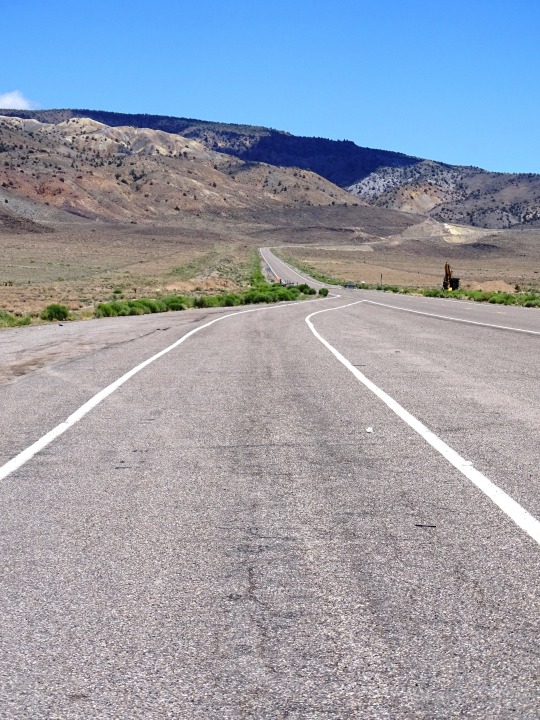




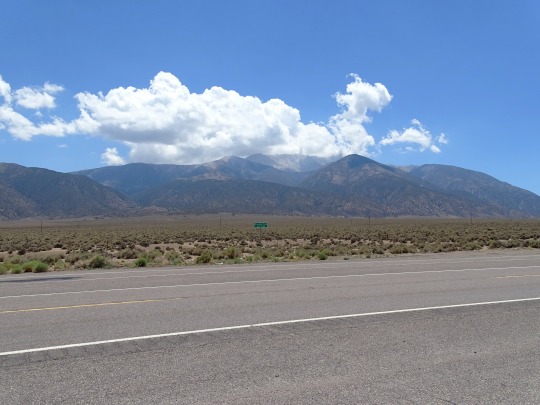


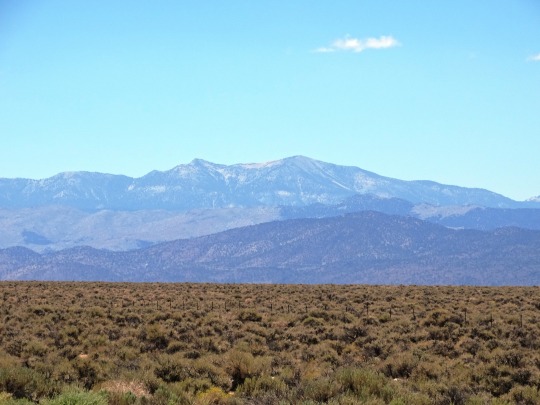

Great Basin Desert, NV (No. 3)
Boundary Peak is a mountain in Esmeralda County, Nevada, United States. With a peak elevation of 13,147 feet (4,007 m), it is the highest natural point in the state of Nevada.
Boundary Peak is the northernmost peak of 13,000 feet or greater elevation within the White Mountains. The summit is located in Esmeralda County of southwestern Nevada, and is within the Boundary Peak Wilderness of the Inyo National Forest. It is less than half a mile (1 km) from the California state line, which is how it derived its name.
While it is the highest point in Nevada, the considerably taller Montgomery Peak (13,441 feet or 4,097 metres) is less than 1 mi (1.6 km) away, across the state line in California. By most definitions Boundary Peak, which has a prominence of only 253 ft (77 m), is considered to be a sub-peak of Montgomery Peak.
Boundary Peak is only 82 feet (25 m) taller than Wheeler Peak, which is located in Great Basin National Park, White Pine County in eastern Nevada. By most definitions, Wheeler Peak is the tallest independent mountain within Nevada.
Source: Wikipedia
#wild horse#animal#fauna#wildlife#Highway 6#travel#original photography#vacation#tourist attraction#landmark#cityscape#USA#summer 2022#street scene#clouds#sign#mountains#landscape#desert#countryside#Nevada#Great Basin Desert#flora#Boundary Peak#Esmeralda County#White Mountains#Hwy 6
18 notes
·
View notes
Text

I'm Very behind but here is another yeehawgust prompt comission!!
29 notes
·
View notes
Text



#Joshua tree flora & fauna#joshua tree#joshua tree national park#adventure#travel#my photo#southwest#desert#mountains#photography#aesthetic#nature#California#SoCal#Southern California#Mojave#lizard#flowers#scenery
27 notes
·
View notes
Note
I keep forgetting to ask this. I heard that in Australia, rabbits I considered pests similarly to how America sees rats. Is that true? (If so, does that mean Ghost is your guys' equivalent to owning a rat? XD)
Cool question! XD I conferred with my mum, who has been Australian for a lot longer then me (: (don't tell her I said that. she likes to live in a world where she's still 32) for this but the answer is still pretty boring 😅
For the farmers and people living out in the country, yes. They eat the crops! They steal wombats burrows! (Don't quote me on that. I just read that they compete with native wildlife and I couldn't imagine one taking on a kangaroo) For us in the suburbs (and probably the cities), no- bun bun's are pretty much just household pets XDD Though we do have some wild ones. My friend has one that routinely hangs out in her front yard that she refuses to let me name. It is nameless ^^ It is free! 🐇
#i have heard the same thing though XD#i think it comes from people who lice more out in the bush/desert areas#cuz yeah#rabbits. well... reproduce like rabbits#and eat a lot#including native fauna that native wildlife wanna eat#and after living with ghost this long i can t o t a l l y see how thats a problem. she r a r e l y stops eating 😅
7 notes
·
View notes
Text
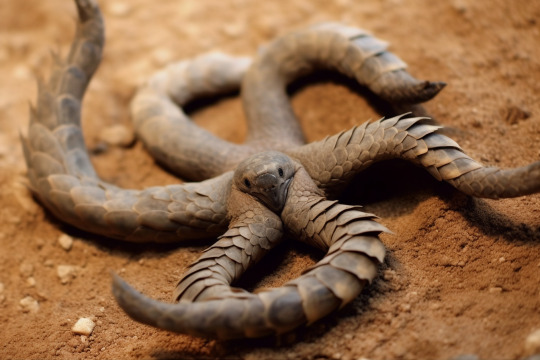
Radial viper tortoise. Midjourney 5.2
#ai desert fauna#tortoise#snake#starfish#panspermic reptile echinoderm hybrid#chimerical extrasolar wildlife
8 notes
·
View notes
Text
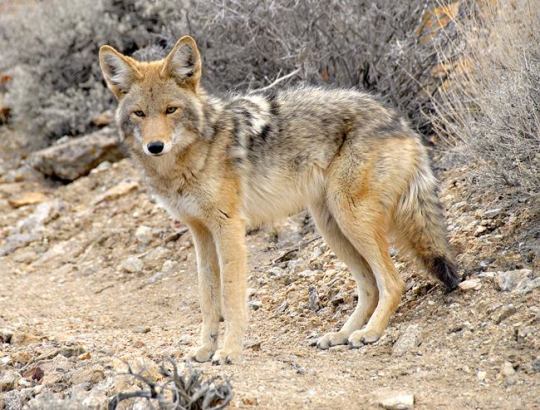
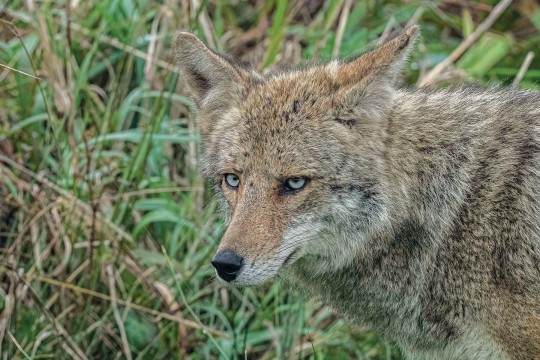

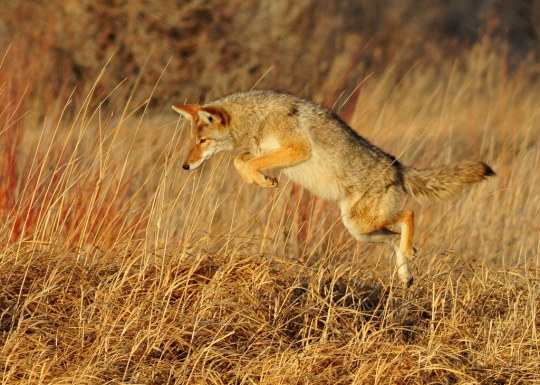
Close Up with Coyotes
Often confused with wolves, foxes, or even stray dogs, the coyote (Canis latrans) is a species of canid found only in Central and North America, from Panama to central Canada. Historically, the coyote mainly occupied grasslands, scrubland, and deserts; however, in the past few centuries the species has expanded its range to include deciduous and evergreen forests, mountains, swamps, and even cities. Generally individuals and groups keep to one home territory, but they will move when resources become lacking.
Among the canines, coyotes are rather small, weighing only 8 to 20 kg (18 to 44 lb), and males tend to be larger than females. Generally coyotes sport a light gray, red, or brownish coat with a lighter underside; however, regional populations may differ wildly. This species may be identified from other canids by its large pointed ears, whitish facial markings, and narrow snout.
Though C. latrans does occasionally form packs, it is more likely to hunt individually or in small family groups. Nonfamily packs, usually made of bachelors, are rare. In addition, coyotes have been known to form mutualistic hunting relationships with other species like badgers. It is primarily carnivorous, hunting mainly at dawn and dusk for rabbits and hares, squirrels, mice, lizards, and occasionally larger targets such as deer or pronghorn. This species will also readily consume carrion, as well as produce and human food waste, making it highly adaptable to urban areas. Traditionally, the species has been limited via both competition and direct predation by wolves and cougars; in its expanded range, coyotes may also be predated upon by bears, alligators, lynx, and golden eagles.
Though reproduction typically takes place in the spring, from January to March, temporary pair bonds may form as early as November. Mates prepare dens, which may be dug out or selected from tree hollows or pre-existing burrows, and establishes a territory up to 19 square km (11 square miles). During this time, daughters from a females previous litter, or her sisters, may join the group. Pregnancy typically lasts just over 60 days, during which time the male and any assisting females do most of the hunting. Litters average 6 pups, and weaning takes about a month. During this time, the male continues to provide for the mother and pups, but will abandon the den if the mother goes missing. By the age of four or five weeks the pups develop a hierarchy through play-fighting. After about 6 months, the male pups will leave, while females will typically stay with their mothers until at least the next mating season, at which time they reach sexual maturity. In the wild, individuals may live as long as 10 years.
Conservation status: Due to its large range and adaptability to human habitats, the C. latrans is considered Least Concern by the IUCN. In urban areas, coyotes are regularly hunted as a nuisance species due to their predation on free-roaming pets and, occasionally, livestock.
In traditional Indigenous American stories, the coyote was seen as a trickster or anti-hero (here is an interesting paper about the 'Coyote' character in traditional stories versus western interpretations). The European colonization of North America and the eradication of large predators like wolves and cougars has allowed coyotes to spread far beyond their original geographic range and become a 'nuisance species' in urban areas.
If you like what I do, consider leaving a tip or buying me a ko-fi!
Photos
Neil Nurmi
Carlos Porrata
Natrice Miller
Tom Koerner
#coyote#Carnivora#Canidae#canines#canids#carnivores#mammals#generalist fauna#generalist mammals#grasslands#grassland mammals#scrubland#scrubland mammals#deserts#desert mammals#north america
169 notes
·
View notes
Text
thinking about the ways the sky islands and depths could've been improved
#bwark#maybe the islands above the rito area are still cold even after the blizzard clears because of the high altitude#maybe the islands above the goron area make you change your protection from flame guard to heat resistance because you're more exposed to#the sun up there#maybe the waters in the depths under lanayru are completely frozen over and you get to play on icy lakes#maybe as a stark contrast to the arid gerudo desert there's a luscious nature biome filled with undiscovered gorgeous fauna that's been#protected from the harsh environment of the desert this entire time due to being underground#hell i've got an idea for an entire sidequest involving the minish because they were scrapped during botw's production in this area
3 notes
·
View notes
Text
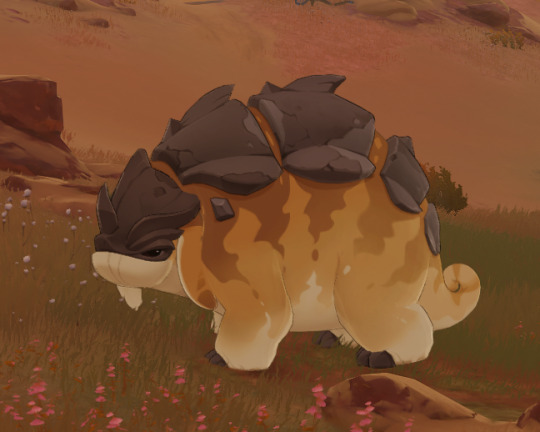




Desert Sumpter Beast: Sumpter Beasts are friends of humanity. Gentle by nature they serve as important tools of production and transport. Sumpter Beasts can adapt to various different natural environment. Long before the forest merchants ever noticed them, these hardworking animals were already the much-relied-upon domesticated beasts of the desert peoples
#genshin impact#gifs#fauna#sumpter beasts#desert sumpter beast#sumeru#someday i will sit down and work out the taxonomy of sumpter beasts
13 notes
·
View notes
Text
Every time I remember just how batshit Inazuma must seem to non-inazumans I start wheezing
#tbd.#* ooc. / posts.#To this day it remains the most bloodthirsty nation... everything in there wants you DEAD#It's probably so funny to watch inazumans & non-inazumans react to each other's countries#bc for example Heizou feels no fear regarding other nations' fauna/flora since Inazuma's is the worst by far#meanwhile if tourists try to go to any other island that isn't Narukami or Watatsumi they will be; as Raiden says; Struck Dead#I'm still not over that random consecrated beast from Sumeru's DESERT appearing in Inazuma to feed on Orobashi. Inazuma is just haunted atp#Deadly mechanisms... storms everywhere... random lightning strikes... consecrated beasts... ronin at every corner... evil spirits...#NOT TO MENTION 4/6 OF THE ISLANDS ARE UNINHABITABLE#They genuinely can't have it rougher in any other nation so they're Chillin' whenever they go abroad no matter where they end up
9 notes
·
View notes
Text
Glass Desert Hessi
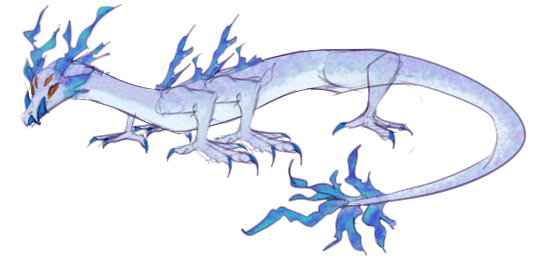
The Hessi are the largest sapient species on Sunit, but also the least advanced. Carnivorous and nomadic, Hessi live in familial tribes in Sunit's oceans, mountains, and deserts.
Glass Desert Hessi
Pictured above is a Glass Desert Hessi, the Hessian subspecies adapted to live in one of the hottest and most dangerous places on the planet. This subspecies is considered medium in size (about 12-15 feet long).
This subspecies has mottled, shimmering scales to blend in with the iridescent sand of the Glass Desert, with Crystalline horns to disguise themselves as the fulgurite trees that scatter the sands. They hunt via ambush, waiting below the sands for prey to come within striking distance.
Their Crystal horns and spines allow them to safely absorb strikes from the desert's many lightning storms, storing the energy to be used for signalling other Hessi via bioluminescence or for electrically charging their teeth to take down larger prey.
#info#world of sunit#sapients#hessi#glass desert#fauna#original species#spec evo#speculative fiction#spec bio#speculative biology
7 notes
·
View notes
Text
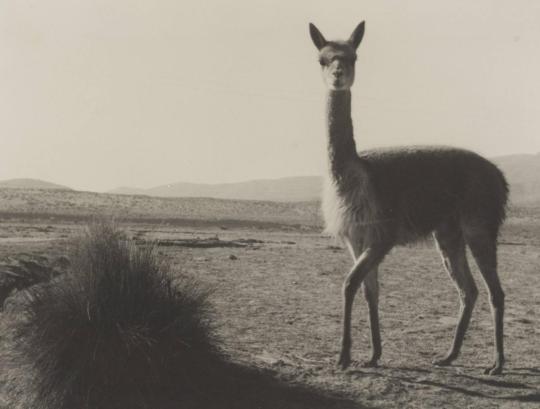
Roberto M. Gerstmann (Österrike, 1896 - 1960) :: Vicuña Andes 1930-1950. Gelatin silver print. | src Moderna Museet
View more on WordPress
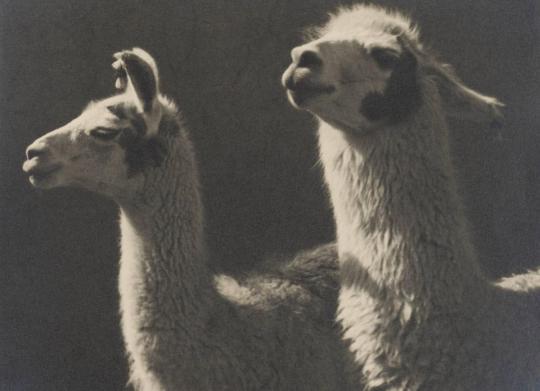
Roberto M. Gerstmann (1896 - 1960) :: Llama, Anderna, 1930-1950. Gelatin silver print. > > > View more on WordPress
#1940s#andes#animal#animal portrait#animals#chile#desert#fauna#landscape#paesaggio#panorama#paisaje#paisatge#Landschaft#paysage#llama#moderna museet#Roberto Gerstmann#Roberto M. Gerstmann#vicuña
44 notes
·
View notes